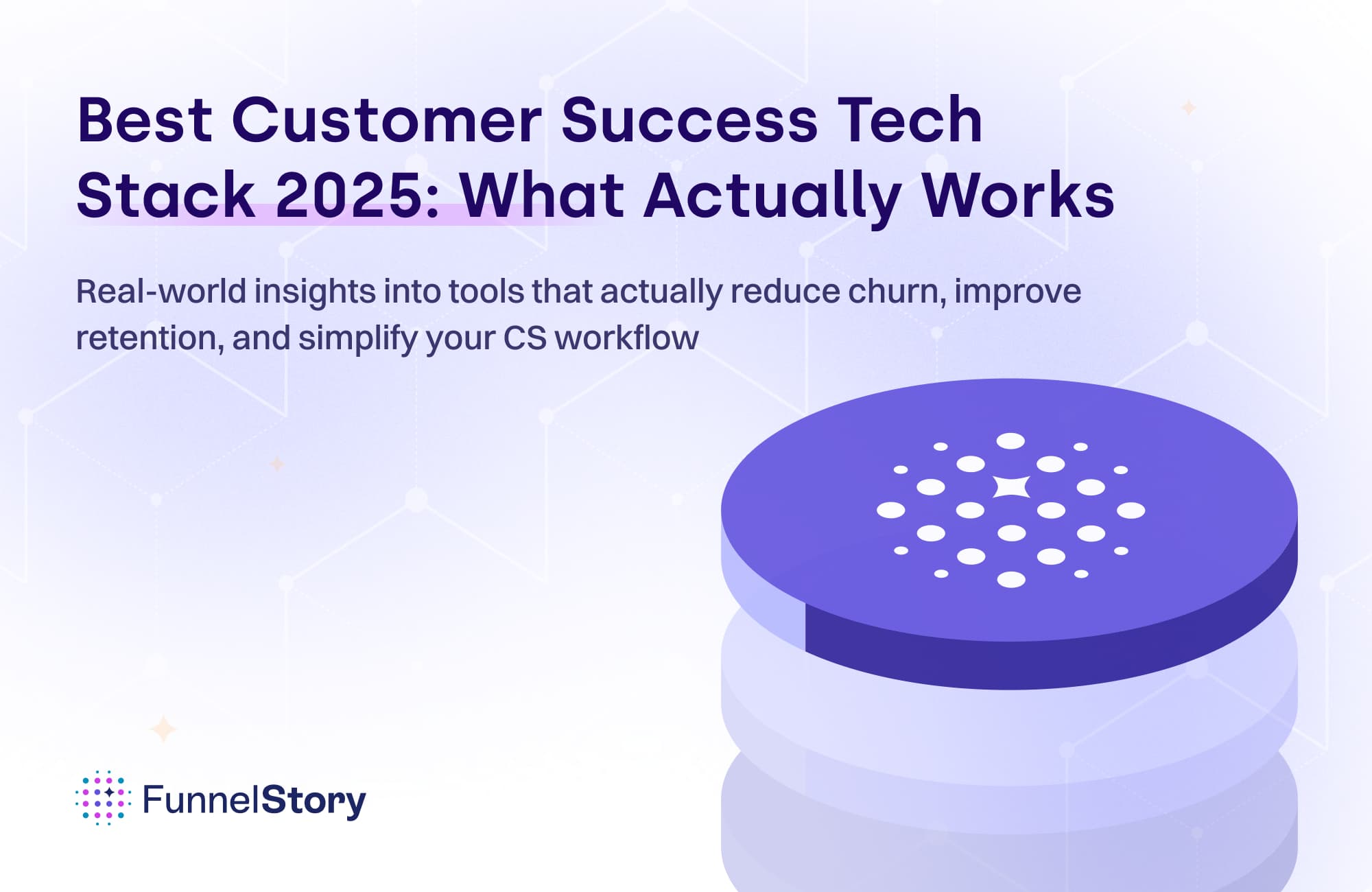In this article
The Power of B2B Personalization: Building Audiences with Product Data
In the dynamic realm of B2B marketing, personalized engagement is crucial for effective audience targeting. Utilizing product data provides actionable insights, enhancing marketing campaigns and driving measurable results

By Alok Shukla
Cofounder and CEO
Nov 13, 2023
8 min read
TL/DR: Your product data contains your ideal customer profile and their interaction profile with the product. It also contains the prospect audience who did not purchase your product and left before the conclusion of a PoC or a trial, or prospects who did not renew. Each such audience has different needs, purchase behaviors, and different models of interacting with the product. Marketers can benefit from such product funnel intelligence.
Introduction: The Power of Personalization
In the ever-evolving landscape of business, a buzzword has emerged that's becoming impossible to ignore: personalization. Gone are the days when generic advertising and one-size-fits-all content would suffice. Today's business buyers crave experiences tailored specifically to them that reflect their interests, needs, and behaviors.

A staggering 72% of these buyers now expect vendors to personalize their experiences. This isn't just a mere preference; it's an outright demand. Yet, diving deeper into marketing and sales, a surprising disconnect appears. Only a meager 15% of Chief Marketing Officers (CMOs) believe their organization is on the right path to meeting this demand. This disparity between expectation and confidence in delivery paints a stark picture: many companies' current approach needs to be updated or more effective.
This brings us to an important juncture. The age of personalization is not on the horizon; it's already here. And for companies to thrive or survive, there needs to be a profound shift in focus. A shift towards strategies and tools that not just understand but anticipate the unique needs of every individual buyer.
Join us as we delve into how product data can be the key to unlocking this much-desired personalization. It allows businesses to stand out in a crowded market and foster deeper, more meaningful connections with their customers.
What is Audience Targeting?
Audience targeting, at its core, is the art and science of tailoring your marketing efforts to a specific group of people. Instead of casting a wide net with generic messages, businesses with an audience-targeting approach zoom in on segments that matter most to them. These segments can be based on various criteria, from demographics and interests to behavior and past purchase history.

But here's the catch: audience targeting isn't just any run-of-the-mill marketing campaign. It's a more refined strategy. While general marketing might shout a message hoping someone in the crowd hears it, audience targeting whispers directly into the ears of those most likely to engage.
The heart of audience targeting lies in its commitment to relevance. We've all been receiving content that doesn't resonate, leading us to tune out or grow frustrated. By understanding and leveraging your audience's preferences, not only in terms of content but also the channels they frequent, businesses can drastically enhance the effectiveness of their marketing, ensuring messages land with impact and generate meaningful engagement.
In our quest to achieve personalization, understanding audience targeting is crucial. And as we'll explore in upcoming sections, product data can be a game-changer in this arena. Speaking of which, if you're interested in the nuances of data and its role in sales, our article on Sales Leaders Needing More Answers and Fewer Reports offers some intriguing insights.
The Goldmine of Product Data
In today's hyper-competitive market, more than merely understanding your audience's demographics is needed. We must dive deeper and seek the intricate details influencing their behaviors, preferences, and pain points. This is where product data emerges as a goldmine for marketers.

Traditional audience-building methods often scratch the surface. They may give us a broad overview - age groups, geographic locations, or some baseline behaviors. However, a more nuanced understanding is necessary to achieve that coveted personal touch.
Enter product data. Every click, every interaction, every moment spent on a platform provides a data point. These data points offer a treasure trove of insights when collected and analyzed. For instance, understanding which features of a product get the most interaction can tell us a lot about what users value or need most. Similarly, areas of the product that see little to no interaction might indicate points of confusion or irrelevance.
And speaking of product interactions, let's discuss product trials. They're often a user's first real interaction with a product. Yet, as explored in our article The Problem with Product Trials and How to Improve Yours, many businesses need to catch up here. With the right product data, we can get a clearer picture of trial user behaviors and identify what's working and, more importantly, what's not. These insights are pivotal in tailoring experiences that engage and convert.
To sum it up, if we aim for marketing precision and personalization, the deep well of product data must be noticed.
Building Effective Audience Segments with Product Data
Crafting a successful marketing campaign is much like assembling a puzzle. Each piece, in this case, a user, has its unique shape, size, and position. While demographic data can provide the broad strokes of this puzzle, product data helps us identify and place these unique pieces accurately.
Start with observing customer interactions. Every feature used, time spent on particular tasks, and return visits provide insights into a user's psyche. Are they frequent users of a particular tool? Do they need help with specific functions? By noting these behaviors, we can begin to see patterns and trends. These patterns, when grouped, become our segments. For instance:
Trial Users: Those testing waters often need targeted guidance and reassurances.
Upsells: Existing users might be ready for advanced features or additional services.
Win-backs: Past users who left but showed potential signs of returning.
Highly Engaged Users: Loyal users frequently interact with the product's potential brand ambassadors.
Churn Risks: Users whose interactions are dwindling might indicate dissatisfaction or a shift to competitors.
Now, while segmenting is crucial, what's even more essential is using these segments effectively. In our article, Sales Leaders Need More Answers and Fewer Reports, we discuss the importance of actionable insights over piles of raw data. Product data provides:
These actionable insights.
Allowing us to tailor our approach for each segment.
Ensuring more meaningful and effective engagements.
While general data sets the stage, product data plays the lead role, ensuring your audience feels seen, heard, and valued.
Top Use Cases for Audience Targeting in B2B
In the B2B landscape, personalization isn't just a nicety; it's often the distinguishing factor between sealing a deal or losing a prospect. Let's delve into some standout use cases where businesses have masterfully wielded product data for pin-point audience targeting:
Nurturing Trial Users: Recognizing patterns in product interactions allows businesses to tailor onboarding content, ensuring trial users smoothly transition to paid customers. Businesses can reduce the churn rate in this crucial segment by addressing specific pain points revealed through product data.
Upsell Opportunities: By observing how current users utilize advanced features, businesses can identify who might benefit from a premium tier or additional services. Instead of a cold upsell, it's a warm, informed recommendation.
Win-Back Campaigns: Analyzing product data can help understand why a client moved away. A tailored approach addressing those pain points can differentiate between a successful win-back and a missed opportunity.
Rewarding High Engagement: Highly engaged users are golden. Not only are they loyal, but they're also potential brand ambassadors. Product data can help businesses identify and reward these users, turning them into advocates.
Mitigating Churn: Before a user churns, there are often telltale signs in their product interactions. Recognizing these can enable timely interventions, potentially salvaging a business relationship.
Consider the insights from our piece on The Problem with Product Trials and How to Improve Yours for further inspiration. It emphasizes deep-diving into user behaviors, turning seemingly trivial interactions into powerful insights.
To wrap it up, these use cases underscore a singular truth: In B2B, understanding and acting on product data isn't just a strategy; it's a game-changer.
Activating Audience Data: From Insight to Action
Harnessing the power of product data is only half the battle. The real magic happens when you turn these insights into actionable strategies. Here's how B2B businesses can go from mere understanding to impactful execution:
Creating Ad Campaigns: Tailor your ad content based on what the product data reveals about your audience segments. For instance, if many users frequently engage with a particular feature, highlight it in your next campaign.
Sending Personalized Emails: Gone are the days of generic email blasts. Use product data to craft messages that resonate. For instance, alerting a segment about a new feature enhancement that caters to their frequent usage patterns can lead to higher engagement.
A/B Testing Messaging: Not all communication will hit the mark the first time. Use product insights to inform A/B tests. It could be as simple as tweaking a call-to-action based on how users interact with a platform.
Optimizing Content Surfaces: Product data can guide content placement on your site or within your tool. A popular feature among a segment might deserve more prominent positioning in tutorials or landing pages.
In a nutshell, audience data is a treasure trove. But its real value is unlocked when businesses take those golden nuggets of insight and craft strategies that genuinely resonate with their audience. Remember, it's not about data for data's sake—it's about driving meaningful engagement and results.
Conclusion and Next Steps with FunnelStory
In the evolving landscape of B2B marketing, understanding and leveraging product data has proven to be the linchpin of success. It enhances personalization and bridges the gap between customer expectations and businesses' ability to meet them.
However, more than just having access to product data is required. The true mastery lies in transforming this data into actionable insights, aligning marketing strategies, and ensuring content is tailored to each audience segment's unique preferences and behaviors.
If you're committed to tapping into the goldmine of product data and optimizing your audience targeting efforts, look no further. FunnelStory is here to elevate your strategies, offering tailored solutions that align with the unique needs of B2B businesses. Ready to unleash the full potential of your product data? Explore FunnelStory's suite of solutions and embark on a transformative journey today.




